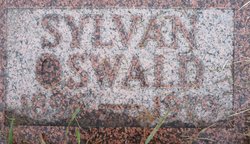Father Albert Lacombe looms large in the early history of Western Canada. Born in St. Sulpiche, Lower Canada, he left for the West in 1850, when he took a posting in Pembina, joining the Metis on the buffalo hunt the following year. In 1853, Lacombe was sent further into Rupert's Land, to assume a position at Lac St. Anne, and several years later he set up an mission at St. Albert for indigenous people in the Fort Edmonton area. While the evangelical efforts of religious orders have received their fair share of condemnation for their role in the colonial project of nation building, there are also a few connections between Lacombe and the actual construction of the iron road.
Lacombe's direct involvement with the railway may have begun in 1880, as the transcontinental line was just beginning to be extended across the prairies. As Raymond Huel notes in the Dictionary of Canadian Biography, "he assumed responsibility for ministering to railway workers along a section of the transcontinental line being built east of Winnipeg, and in the camps he found that blasphemy, drunkenness, and immorality were rife. 'My God, send me back to my old Indian mission,' he wrote in his diary."
 |
File number: NA-4209-2
Title: Father Albert Lacombe en route to Calgary from Blackfoot reserve, Alberta.
Date: Autumn 1884 |
Lacombe's role as "railway worker" continued into 1883. As surveyors plotted the location of the line near Blackfoot Crossing, Lacombe negotiated with the Niitsitapi (Blackfoot) chiefs, giving them gifts of sugar, tobacco, tea, and flour, relaying that Lt. Gov. Edward Dewdney would hear their protests personally.
Pierre Berton's popular history The Last Spike recalls that the directors of the CPR were so pleased with Lacombe's ability to clear the grade of indigenous resistance that they made the priest president of the CPR for an hour. Lacombe decided to immediately grant himself two lifetime passes on the railroad, and free transport of goods for Oblate missions. Not stopping there, he also guaranteed himself free use of the telegraph for life. The directors were reportedly more than happy to afford him the privileges.
Lacombe was said to loan his passes out rather frequently, and one humorous incident, recorded by Berton, is worth repeating:
"On one occasion the two passes, which became familiar along the line, were presented by two nuns, newly arrived in the west. 'May I ask,' the conductor politely inquired, 'which one of you is Father Lacombe?' He let the blushing sisters go on their way."
 |
"Blackfeet at Earnscliffe." 1886 Father Lacombe at centre, standing.
"Front row", left to right: North Axe, Peigan Chief, One Spot, Blood sub-chief. "Middle row", left to right: Three Bulls, half brother of Crowfoot, Crowfoot, Blackfoot Chief, Red Cloud, Blood Chief. "Back row", left to right: Father Lacombe, John L'Heureux, interpreter. Credit: Canada. Dept. of the Interior / Library and Archives Canada / PA-045666
 Interestingly enough, there was already a precedent for the gifting of a lifetime pass for negotiations surrounding this very territory. Chief Crowfoot's pass is among the interesting articles exhibited in the recently updated Canadian History Hall at Ottawa's Canadian Museum of History. Isapo-Muxika (Crowfoot) was granted this permanent ticket in 1877 for his help in the successful negotiation for the route of the main line through Blackfoot territory. These gifts suggest great trepidation on the part of the railway directors when it came to crossing the lands occupied by the Siksika (Blackfoot). That same year, the Siksika were granted their reserve at Blackfoot Crossing, which the CPR's main line crosses to this day. Interestingly enough, there was already a precedent for the gifting of a lifetime pass for negotiations surrounding this very territory. Chief Crowfoot's pass is among the interesting articles exhibited in the recently updated Canadian History Hall at Ottawa's Canadian Museum of History. Isapo-Muxika (Crowfoot) was granted this permanent ticket in 1877 for his help in the successful negotiation for the route of the main line through Blackfoot territory. These gifts suggest great trepidation on the part of the railway directors when it came to crossing the lands occupied by the Siksika (Blackfoot). That same year, the Siksika were granted their reserve at Blackfoot Crossing, which the CPR's main line crosses to this day.
These two lifetime passes seem to be the only ones recorded, but perhaps there were more? Crowfoot is said to have worn his around the neck for the rest of his life, suggesting it served as a symbol of his role as intermediary between the two cultures. It would be interesting to know if there are any other lifetime passes which still exist, or if Lacombe's pass has survived the years.
|





